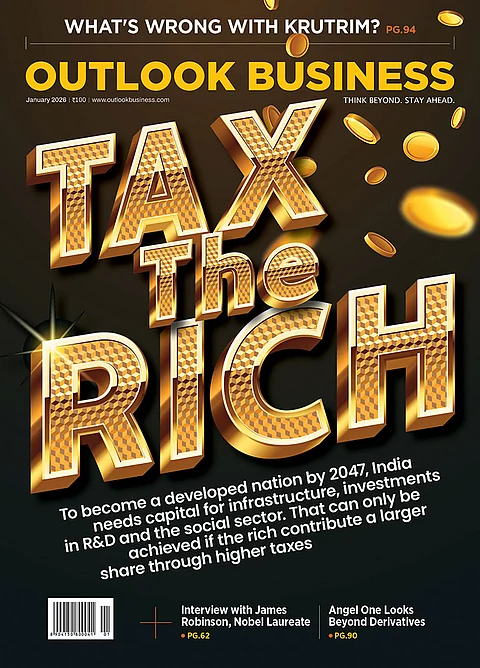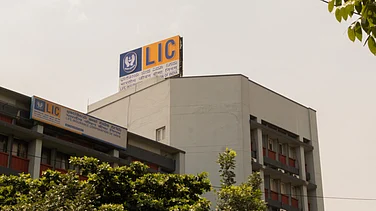Indian film director Nitesh Tiwari's magnum opus 'Ramayana' is set to become the costliest film ever made in the country, with a reported budget of around ₹835 crore ($100mn) for part one itself. This multipart movie will be headlined by Ranbir Kapoor as Lord Ram, Sai Pallavi as Sita, Ravi Dubey as Lakshman and Yash as Ravana. The pilot part of the movie has wrapped up production with a target of Diwali release next year.
With such a shattering budget, the movie eclipsed all the recent big-budget movies like Kalki 2898 AD (₹600 crore), RRR and Adipurush (₹550 crore each), and Brahmastra: Part One (₹375 crore). This staggering budget now raises the question how will this ₹800+ crore gamble pay off financially?
India is the biggest film industry in the world in terms of the number of films it produces each year, which is over 1,000. As an industry, Bollywood or the Hindi film industry alone is enough to rank 2nd position in the world.
Production Scale: Stars to VFX
What is behind the ₹835 crore budget? Its ambition is to deliver one of the never-before experiences, especially after Om Raut's Adipurush, based on the same mythology, fell short of its promises. Ramayana is leveraging top-tier resources across the board.
The filmmakers have enlisted the Oscar-winning British-Indian VFX house DNEG to create photorealistic environments, mythical creatures, and epic battle sequences. The Hindustan Times reported that the first film alone requires an estimated 600 days of post-production to realise its grand visuals. As compared to this even VFX heavy movie like Brahmastra only cost ₹375 crore.
The movie is being filmed for IMAX and using Hollywood-scale technology to ensure it looks and feels like a global spectacle. DNEG stated that the film also marks the first collaboration between Oscar-winning music legends Hans Zimmer and A.R. Rahman, with action choreographed by Terry Notary (Avengers, Planet of the Apes) and Guy Norris (Mad Max: Fury Road, Furiosa). The visual grandeur of ancient India is being reimagined by renowned production designers Ravi Bansal (Dune: Part Two, Aladdin) and Ramsey Avery (Captain America, Tomorrowland).
Since it's a multi-starrer project, the paycheck is also at par with its casts' stardom. According to Times of India, Ranbir Kapoor will receive a whopping remuneration of ₹75 crore for each instalment whereas Yash will charge ₹50 crore. Sai Pallavi, who is widely known for her content-driven roles, also taking home ₹6 crore.
Although it's still unclear whether the movie budget includes marketing and publicity, but a grand project like Ramayana will also rely on massive promotion budget as well. Big-budgeted Indian movies routinely spend ₹20-50 crore on marketing domestically. But a an aspiring global tentpole like Ramayana may invest even more to build buzz across continents.
Revenue Streams
Om Raut's Adipurush was reportedly made at a cost of over ₹500 crore. Some reports also suggested that the cost of Adipurush shot up to ₹700 crore later as it had to re-work on its VFX due to online backlash and delayed release dates. According to Bollywood Hungama, it earned ₹135.04 crore at the box office. Most of its collections came from week one and dropped drastically by 89.77% in the second week. It grossed around ₹400 crore worldwide. It was India’s most expensive film at release, but negative reception turned it into a cautionary tale.
It’s worth noting that Ramayana was initially announced in 2019 as a trilogy with an estimated ₹500 crore budget. Since then, the scope (and cost) have ballooned–partly due to ambitions of truly world-class VFX, and perhaps lessons learned from other epics.
"Bringing together the finest global talent allows us to tell this story with authenticity, emotion, and state-of-the-art cinematic innovation. We’ve seen Ramayana portrayed before — but this version reimagines its landscapes, creatures, and battles with the scale and splendour they deserve," said producer Namit Malhotra, CEO of DNEG.
By any measure, no Indian film or franchise dared to attempt an investment at this scale. Historically, a big budget does not guarantee of success but it does set audiences' high expectations for quality. Amid such risks, recovering more than ₹800 crore is not a piece of cake for the Ramayana team. The outline plan of Ramayana to recover over ₹800 crore will require them to capitalise on every possible revenue stream.
Theatrical revenue is still the backbone of the film business in India. Typically, the gross box office collection is shared approximately 50–55% with theatres and distributors, while the remaining 45–50% goes to the producers—though this split can vary depending on the region and stage of the theatrical run.
For a film like Ramayana to recover ₹835 crore solely from theatres, it would need to gross somewhere between ₹1,600 and ₹1,800 crore globally. That’s an extremely tall order—only a handful of Indian films have ever breached that benchmark. For context, Dangal (2016) by the same director, the highest-grossing Indian film to date, made around ₹2,050 crore worldwide—largely thanks to its phenomenal success in China, a rare outcome unlikely to be replicated without strong overseas appeal. Koimoi estimated that it's not entirely impossible for Ramayana. The second highest, Baahubali 2 (2017), which made around ₹1788 crore worldwide. In other words, Ramayana would require a Baahubali level of success if not more.
The magnum opus projects of Indian directors have shown growing overseas traction–RRR became a mini-sensation in North America in 2022. Dangal famously grossed $250mn in China alone, revealing a huge market for Indian stories if they connect.
Big Indian films often mitigate risk by pre-selling regional distribution rights before release. GQ India reported that Adipurush had recovered 95% of its cost through such deals. According to reports, Adipurush’s Telugu rights sold for ₹150 crore and Hindi + rest of India for ₹120 cr, while its OTT streaming rights fetched ₹210 crore–totalling nearly ₹480 crore pre-release.
Nowadays, post-theatrical streaming rights are a major source of income flow. Streaming giants like Netflix, Amazon Prime or Disney+ Hotstar often pay top prices for exclusive rights to big films after their theatrical window. OTT has become a safety net post-pandemic and people might still watch even if they do not prefer to go out. Apart from OTT rights, a big star-driven film can get hundreds of crores for satellite rights depending on language and market size. Apart from these, films also make revenues from selling music rights to a label and opening up merchandising ancillary revenue streams.
High Risk Brings High Reward
Indeed, ₹800 crore riding on a well-known and well-portrayed story is an extraordinary gamble. On one hand, it reflects both the evolution and confidence of the Indian cinema. On the other hand, the immense risk appetite of its backers.
The comparisons to previous blockbusters underscore just how massive the potential upside could be. If Ramayana manages to strike the right chord with audiences — both domestically and overseas — it could well find itself in the rarefied company of Dangal, Baahubali 2, and RRR. These films didn’t just break records; they redefined the scale and global reach of Indian cinema. Should Ramayana deliver on its promise, it has a real shot at joining — or even surpassing — them in the record books. But again, it all depends on whether the audience accepts this ambitious project or not.
In the epic battle of content vs cost, Ramayana now carries not the weight of its over ₹800 crore budget, but also hopes of an industry looking to push boundaries.





























